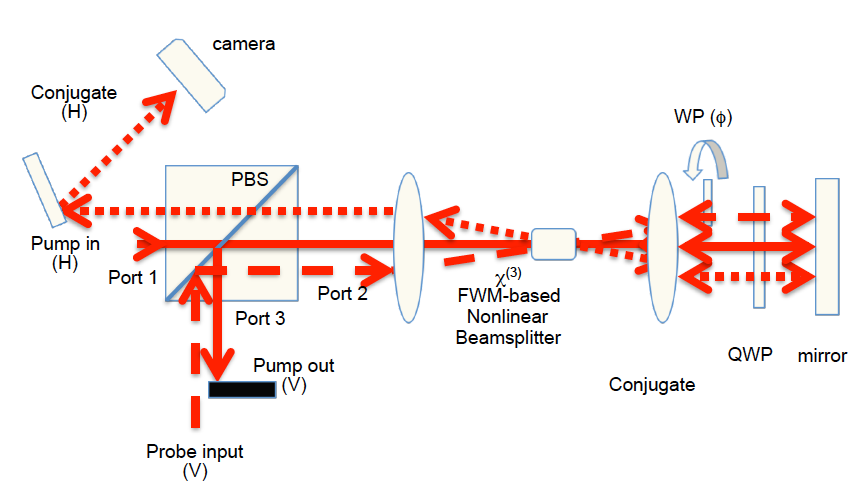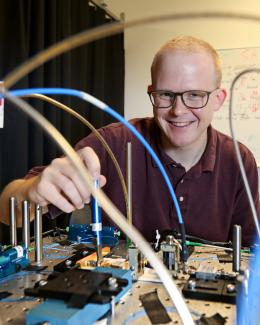Project Details

Interferometry is used in many applications, from aviation to tests of fundamental physics. Interferometers are used to convert a phase change into an intensity change for detection by mixing light on beam splitters. Nonlinear interferometers, which use parametric amplifiers in place of beam splitters, can improve the signal to noise ratio of interferometric sensors by a factor of twice the power gain [1]. Recently ORNL has realized a novel, inherently stable, nonlinear interferometer using nonlinear rubidium vapor [2, 3]. This approach reduces the complexity and the size, weight and power requirements (SWAP) of earlier demonstrations. However, it is still constructed using bulk, free-space optics on a lab table. This project seeks to reduce SWAP further and perform measurements to quantify its performance relative to other approaches.
[1] Z. Y. Ou, Phys. Rev. A 85, 023815 (2012).
[2] J. M. Lukens, N. A. Peters and R. C. Pooser, "Improved Nonlinear Interferometer," Provisional US Patent Application #62/329,230 (2016).
[3] J. M. Lukens, N. A. Peters, and R. C. Pooser, "A naturally stable Sagnac-Michelson nonlinear interferometer,” Optics Letters Vol. 41, Issue 23, p. 5438 (2016).
Contact




